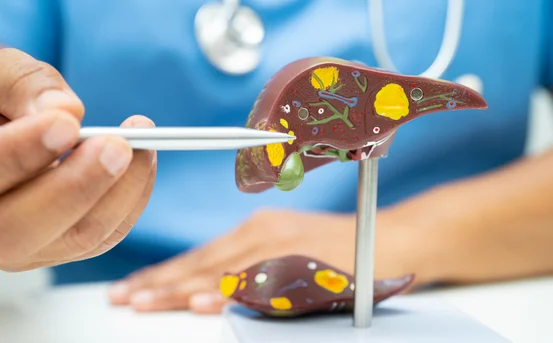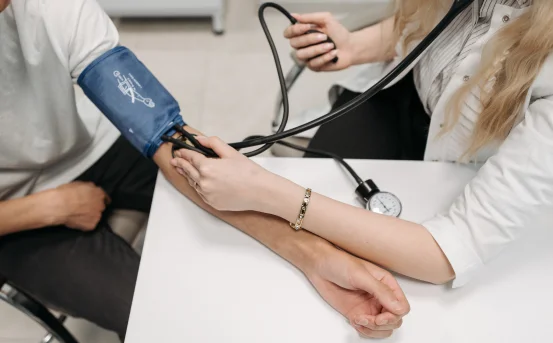Urinary tract infection (UTI) is a common health condition that affects millions of people worldwide, especially women. While often mild, UTIs can lead to serious complications if left untreated. Understanding what a urinary tract infection is, its causes, symptoms, and treatment options can help individuals take proactive steps toward early detection and effective management.
But what exactly is a urinary tract infection? At its core, a UTI occurs when harmful bacteria usually from the gastrointestinal tract enter the urinary system and begin to multiply. The urinary system includes the kidneys, ureters, bladder, and urethra. While UTIs commonly affect the lower part of this system (the bladder and urethra), the infection can sometimes spread to the upper tract (kidneys), causing more serious health problems.
What is Urinary Tract Infection ?
A urinary tract infection is an infection that occurs in any part of the urinary system, which includes the kidneys, ureters, bladder, and urethra. Most commonly, the infection affects the lower urinary tract specifically, the bladder and urethra. In more severe cases, the infection can travel to the kidneys, leading to a more serious health condition.
UTIs are typically caused by bacteria, with Escherichia coli (E. coli) being the most frequent culprit. These bacteria normally live in the intestines but can enter the urinary tract through the urethra, leading to an infection.
Types of Urinary Tract Infection
UTIs can be categorized based on the part of the urinary system affected:
-
Cystitis (Bladder Infection) :- This is the most common form and typically involves frequent urination, pelvic discomfort, and a strong urge to urinate.
-
Urethritis (Urethra Infection) :- This affects the urethra and may cause a burning sensation during urination.
-
Pyelonephritis (Kidney Infection) :- A more serious type that can cause fever, back pain, nausea, and vomiting.
Who is at Risk of Developing a UTI?
Although anyone can get a UTI, certain factors increase the risk significantly. Women are more prone to UTIs due to their shorter urethra, which makes it easier for bacteria to reach the bladder. Other risk factors include :-
-
Poor hygiene practices
-
Sexual activity
-
Use of diaphragms or spermicidal agents
-
Menopause
-
Diabetes
-
A weakened immune system
-
Kidney stones or urinary tract obstructions
-
Prolonged use of catheters
Common Symptoms of Urinary Tract Infection
The symptoms of a UTI can vary depending on the location and severity of the infection. In many cases, the following symptoms are observed :-
-
A persistent, strong urge to urinate
-
A burning sensation during urination
-
Passing small amounts of urine frequently
-
Cloudy or foul-smelling urine
-
Blood in the urine (hematuria)
-
Pelvic pain or pressure in women
-
Pain in the lower abdomen or lower back
-
Fever and chills (especially in kidney infections)
In elderly individuals, UTIs can sometimes present with atypical symptoms like confusion, fatigue, or changes in behavior, which may be mistaken for other conditions.
How is a UTI Diagnosed?
Diagnosing a UTI typically involves a visit to a healthcare provider, who will perform a urine test (urinalysis) to detect bacteria, white blood cells, or red blood cells in the urine. If an infection is confirmed, a urine culture may be ordered to identify the specific bacteria responsible and determine the most effective antibiotic for treatment.
In cases of recurring UTIs or complex infections, imaging tests like ultrasound, CT scan, or a cystoscopy (to examine the bladder) may be recommended.
Treatment Options for Urinary Tract Infections
The standard treatment for most UTIs is a course of antibiotics. The choice of antibiotic and the duration of treatment depend on the type and severity of the infection, as well as the patient’s medical history. Common antibiotics prescribed include :-
-
Nitrofurantoin
-
Trimethoprim-sulfamethoxazole
-
Fosfomycin
-
Ciprofloxacin
-
Amoxicillin
It’s essential to complete the full course of antibiotics even if symptoms improve earlier, as stopping medication midway can lead to antibiotic resistance or recurrence.
For kidney infections, more aggressive treatment, including intravenous (IV) antibiotics and hospitalization, may be required.
In addition to antibiotics, drinking plenty of fluids, resting, and taking pain relievers like paracetamol or ibuprofen can help ease symptoms.
Can UTIs Go Away Without Treatment?
Some mild UTIs may resolve on their own, especially in otherwise healthy individuals. However, relying on this can be risky, as untreated infections can worsen and spread to the kidneys. It’s always safer to consult a healthcare provider when UTI symptoms appear.
Preventive Tips for Avoiding UTIs
Prevention plays a vital role in reducing the risk of urinary tract infections. Here are a few simple yet effective ways to prevent UTIs :-
-
Drink plenty of water throughout the day
-
Urinate frequently and do not hold in urine for long periods
-
Wipe from front to back after using the toilet
-
Urinate soon after sexual activity to flush out bacteria
-
Avoid using irritating feminine hygiene products
-
Wear cotton underwear and avoid tight-fitting clothing
-
Maintain good personal hygiene, especially during menstruation
For individuals with recurrent UTIs, a healthcare provider may recommend preventive antibiotics, lifestyle changes, or additional testing to identify underlying causes.
UTIs in Men and Children
Though less common, men can develop UTIs, often as a result of prostate problems or urinary tract obstructions. In children, UTIs can present with symptoms such as fever, irritability, vomiting, or trouble with urination. Any sign of UTI in infants or young children should be addressed immediately, as early treatment can prevent kidney damage.
When to See a Doctor?
While many UTIs are easily treated, prompt medical attention is crucial if you experience :-
-
Persistent or severe symptoms
-
Fever and back pain
-
Blood in urine
-
Nausea or vomiting
-
Recurrent infections
Early diagnosis and treatment can prevent complications like chronic kidney infections or sepsis a life threatening response to infection.
Conclusion
Urinary tract infections are common but treatable medical conditions. Recognizing the symptoms early and seeking timely care can help prevent complications. By following preventive measures and maintaining good hygiene, most people can significantly reduce their chances of developing a UTI.























